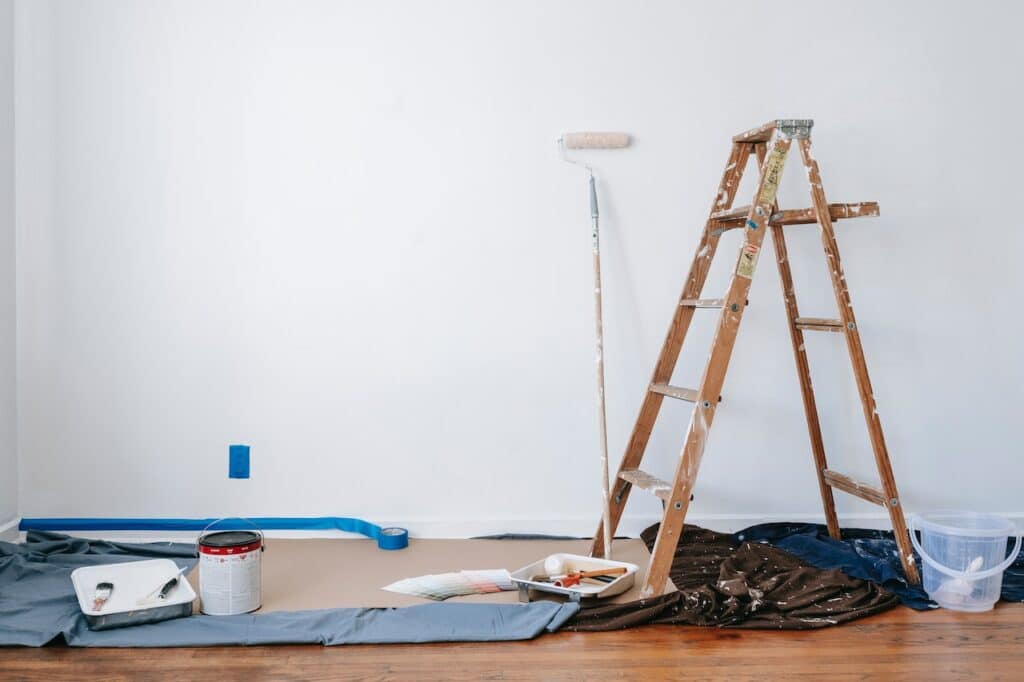
Whether you’re a seasoned DIY enthusiast or just starting out, understanding and implementing the right safety precautions can make all the difference between a successful project and a potential disaster. In this article, we’ll explore the essential “10 Must-Have Safety Precautions for DIY Home Projects” to help you stay injury-free, protect your property, and create a secure environment for your home improvement endeavors. These precautions, ranging from wearing the appropriate personal protective equipment to understanding electrical safety and maintaining a clean workspace, will empower you to tackle your projects with confidence, knowing that you’ve taken the necessary steps to keep yourself and your surroundings safe.
Wear Appropriate Personal Protective Equipment (PPE):
Personal protective equipment is your first line of defense when engaging in DIY home projects. Safety glasses protect your eyes from flying debris, ear protection guards against loud power tools, dust masks shield your respiratory system, gloves provide hand protection, and closed-toe shoes prevent injuries from falling objects. The choice of PPE should align with the specific project’s requirements, ensuring your safety and minimizing the risk of accidents or injuries.
Read and Understand Instructions:
A crucial aspect of DIY safety is taking the time to read and understand all product and tool instructions before diving into your project. Manufacturers provide these instructions to guide you in the safe and proper use of their products. Ignoring or misunderstanding these guidelines can lead to accidents or damage to the tools. Prior knowledge of equipment and materials will help you work confidently and efficiently.
Maintain a Clean and Organized Workspace:
A clean and organized workspace is vital for safety during DIY home projects. A clutter-free environment reduces the risk of tripping and falling. Additionally, it ensures easy access to tools and materials, preventing you from fumbling around for what you need. Proper organization is key to maintaining focus and preventing avoidable accidents in your workspace.
Proper Ventilation:
Ventilation is especially important when working with materials that produce fumes, such as paints, solvents, or adhesives. Insufficient ventilation can lead to health hazards. Using a respirator or working in a well-ventilated area with open windows and doors can prevent inhalation of harmful fumes, safeguarding your respiratory health.
Use Tools and Equipment Safely:
Understanding how to use tools safely is fundamental. Keep tools in good working condition, ensure they are clean and properly maintained, and disconnect them from the power source when not in use. This precaution prevents accidental starts and electrical hazards. Always exercise caution when handling sharp or motorized tools, and be mindful of the placement of power cords to avoid tripping over them. Your approach to tools and equipment should prioritize safety above all else to avoid accidents and injuries during your DIY projects.
Power Tool Safety:
When working with power tools, it’s essential to prioritize safety. Before making any adjustments or changing accessories, disconnect the tool from the power source. This prevents accidental starts and reduces the risk of injury. Additionally, be cautious about the placement of power cords to avoid tripping hazards. Properly maintained tools and responsible use are key factors in ensuring your safety during DIY projects.
Ladder Safety:
Ladder safety is paramount when reaching elevated areas during home projects. Make sure your ladder is on a stable, level surface to prevent it from tipping over. Always maintain a three-point contact by having two feet and one hand or two hands on the ladder when climbing. Avoid standing on the top two rungs, which can make the ladder unstable. These precautions reduce the risk of falls and injuries while working at height.
Electrical Safety:
If your DIY project involves electrical work, taking safety precautions is crucial. Start by turning off the power to the circuit you’re working on to prevent electrical shocks. Employ proper wiring and grounding techniques, and ensure all connections are secure. Before touching any wires or connections, test them to confirm they are not live. Electrical safety measures are essential to safeguard against electrical shocks and fires.
Fire Safety:
Fire safety should never be overlooked during DIY home projects. Have a fire extinguisher nearby, and understand how to use it in case of a small fire emergency. Keep flammable materials away from heat sources or open flames to reduce the risk of fire. Being prepared for potential fire hazards ensures your safety and the protection of your property.
First Aid Kit:
A well-stocked first aid kit is a DIY project essential. In the event of minor injuries like cuts, scrapes, or burns, having the necessary supplies at hand allows for quick treatment. Knowing how to use the first aid kit is equally important. For more severe injuries, it’s crucial to seek medical attention promptly. Being prepared with a first aid kit can make a significant difference in handling injuries during home improvement projects, ensuring your well-being.